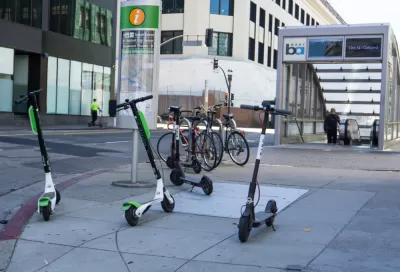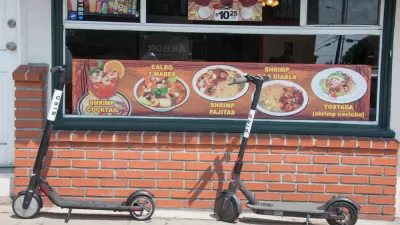Motorists tend to look out for hazards they expect. If tiny vehicles proliferate, including electric scooters, greater safety will follow.

"Two decades ago," and "the very idea of sharing vehicles with strangers would have struck most Americans as odd, even outlandish. Twelve years had to pass after Zipcar was founded in 2000 before even 3% of Americans had tried driving a shared car." Now, as electric scooters become a more and more common sight, drivers may have to get used to navigating the roads with them (not to mention bikes and pedestrians).
With greater numbers comes safety. "Strong empirical evidence suggests that the best thing we can do to ensure the safety of scooter riders is to increase their number. We have no shortage of data about pedestrians and bicyclists, and there's every reason to expect the experience of tiny urban vehicles will follow the pattern."
A psychological "low prevalence effect" underlies that principle. Namely, we tend to devote mental resources to common hazards, and discount rare ones. In places where more people are walking, biking, or scooting, vehicle collisions tend to happen less frequently and are less serious.
In another piece for The Boston Globe, Amy Crawford writes that "if cities and scooters are really going to get along, it will take more than just new regulations — it will take new infrastructure. Sarah Kaufman, associate director of the Rudin Center for Transportation Policy and Management at New York University, argues for expanding cities' networks of bicycle lanes, which she says should be reimagined as pathways for any small, low-speed vehicle, including those we have yet to imagine."
FULL STORY: Tiny Vehicles and the New Safety in Numbers

Alabama: Trump Terminates Settlements for Black Communities Harmed By Raw Sewage
Trump deemed the landmark civil rights agreement “illegal DEI and environmental justice policy.”

Study: Maui’s Plan to Convert Vacation Rentals to Long-Term Housing Could Cause Nearly $1 Billion Economic Loss
The plan would reduce visitor accommodation by 25% resulting in 1,900 jobs lost.

Why Should We Subsidize Public Transportation?
Many public transit agencies face financial stress due to rising costs, declining fare revenue, and declining subsidies. Transit advocates must provide a strong business case for increasing public transit funding.

Wind Energy on the Rise Despite Federal Policy Reversal
The Trump administration is revoking federal support for renewable energy, but demand for new projects continues unabated.

Passengers Flock to Caltrain After Electrification
The new electric trains are running faster and more reliably, leading to strong ridership growth on the Bay Area rail system.

Texas Churches Rally Behind ‘Yes in God’s Back Yard’ Legislation
Religious leaders want the state to reduce zoning regulations to streamline leasing church-owned land to housing developers.
Urban Design for Planners 1: Software Tools
This six-course series explores essential urban design concepts using open source software and equips planners with the tools they need to participate fully in the urban design process.
Planning for Universal Design
Learn the tools for implementing Universal Design in planning regulations.
Caltrans
Smith Gee Studio
Institute for Housing and Urban Development Studies (IHS)
City of Grandview
Harvard GSD Executive Education
Toledo-Lucas County Plan Commissions
Salt Lake City
NYU Wagner Graduate School of Public Service




























